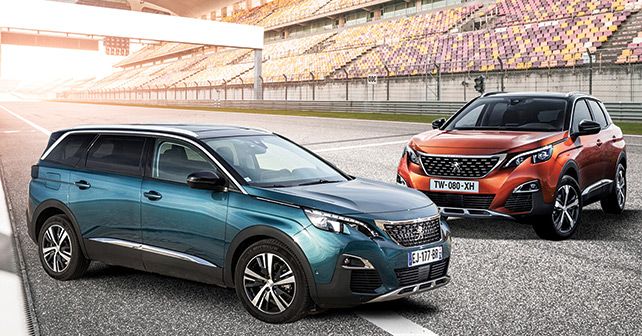
A few years ago, when different options to carry Opel into the future were discussed, not many could have envisioned that the future of the brand would come under the banner of the PSA Group – the French conglomerate, with Peugeot as its core brand. But here they are, with ownership completely transferred from General Motors to the French carmaker. Executives are busy aligning the vehicle portfolio, technological expertise and the geographical footprint.
PSA is traditionally strong in Africa, South America, and in the Middle East. Its brands are making an impact in the Chinese market. But Peugeot and Citroen haven’t been in the US in decades. Over there, Citroen last was a meaningful presence with the DS and the SM models into the mid-1970s. And Peugeot, having enjoyed a windfall when the diesel rose strongly in the early 1980s, left the US market a decade later. Its last model there was the 405 – a car, interestingly, that is produced in Iran to this day in cooperation with partner IKCO.
Let’s take a look at Peugeot, Citroën, DS and Opel – PSA’s active brands. They’ve changed and metamorphosed over the past few decades, and their journey is far from over.
Peugeot – the core brand
Privately owned and headquartered in Sochaux near the German and Swiss border, Peugeot has always kept a healthy distance to Paris and to France’s political class, which dominated Renault – a company that was nationalised after World War II. Peugeot’s models were solid, of high quality and devoid of gimmickry that characterised many other French cars. While the 404 was considered a high-performance sedan in the 1960s, the sedans of the 70s, 80s and beyond were conservative and bordering on the old-fashioned. The timeless, beautifully styled and fun-to-drive 205 and 206 transformed the image again – up to this day.
Today, Peugeot offers a growing number of crossover SUVs with increasingly aggressive design. The 3008 and 5008 are a remarkable presence on Europe’s streets, and they combine versatility with a forward-looking, crisp style. There’s a remarkable tradition of “hot hatches” in Europe, which Peugeot continues to serve successfully. What hasn’t worked so far are the electrics. The previous 3008 came as a plug-in hybrid, which flopped. And a small electric was nothing more than a rebadged Mitsubishi.
Citroën – avant-garde becomes mainstream
Citroën is a brand that made some of the major advances that made the automobile what it is today. The “Traction Avant” was built from 1934 to 1957, followed by the sublime DS and the CX – they stood for an extremely forward-looking, unconventional approach to automotive design and technology. At the other end of the spectrum, the 2CV defined elementary mobility. But Citroën couldn’t survive on its own, so it was swallowed up by Peugeot in 1975. By the late 1980s, it had become a mass-market brand, and some of its offerings were cheapened Peugeots.
Today, Citroën has found a new position. The top-of-the-line models have been spun off with the DS brand, and the mass-market vehicles are very different from Peugeot – or anyone else. Practicality and a joyful design comes first, and Citroën still experiments with new ideas. But it’s not technology for technology’s sake anymore. The C4 Cactus epitomises what the brand stands for – even though the just-launched second generation is a bit too “mainstream” compared to its predecessor.
DS – futuristic luxury
When Citroën launched the DS3, it alluded to the legendary DS – but not in the manner of a retro car. Instead, it succeeded at capturing the innovative spirit of the original DS. Citroen added the DS4, a quirky crossover based on the C4, and the DS5, a spacious and futuristic hatchback. The approach worked so well that DS was made into its own brand.
With an entirely redesigned line-up, DS will move forward as an individualist alternative to the German and Japanese premium brands. With a strong focus on China, the DS7 crossover provides a good glimpse at what’s ahead – expensive materials, futuristic design, and lots of practical functions.
Opel – scrambling for a position
A brand with a more than a century-old heritage, Opel never felt comfortable within General Motors. The brand has enjoyed tremendous successes and serious failures. It’s been on a downward trajectory for decades. It was unable to substantiate its claim to be a near-premium brand, and its sale to PSA was greeted with a collective sigh of relief at GM.
Today, Opel’s future is secure for now, but what exactly its portfolio will look like is uncertain. PSA is likely to launch a number of EVs under the Opel brand. But, if the electric revolution is called off, the prospects for the brand are dim. Meanwhile, many of Opel’s models are competitive in their own right – especially the Astra and the Insignia, still designed under the tutelage of GM.
The future is open
PSA is taking a bullish outlook at electrification and has shifted its attention to EVs and hybrids. At the same time, re-entering the US market is almost a given. The brand positioning of Peugeot, Citroen and DS is logical, but Opel adds a new layer of complexity.
Taking a look at the various brands, I wonder whether PSA has a bit too much on its plate. Take Hindustan Motors – PSA’s plans to get involved with the traditional Indian carmaker were recently announced. And many thought they would use the opportunity to create another iconic vehicle like the Ambassador – perhaps with appeal reaching beyond India. But, so far, we’re still waiting.
























Write your Comment